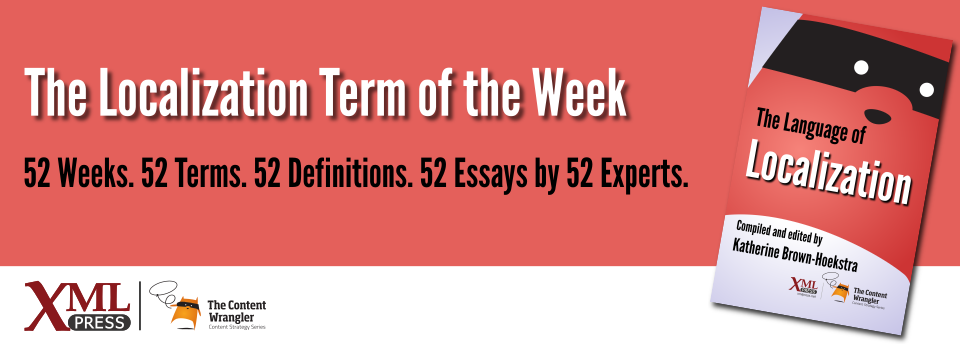What is it?
Technical activities required to support the process of translation, including converting files to a translatable format, re-converting them to their original formats after translation, and ensuring technical validity of translated files.
Why is it important?
Localization engineering is a key component of the localization process and often included as a cost item in estimates, but it is frequently misunderstood or misinterpreted.
Why does a technical communicator need to know this?
Localization engineering affects all stages of a project, from project scoping and preparation to actually building and testing translated deliverables.
During the scoping step, the localization engineer analyzes the source files and generates input for a quote or project schedule. Poorly structured files that lack internationalization can significantly increase localization costs and time. Identifying these issues early in the process makes it easier to generate a more accurate estimate and identify training opportunities.
For most technical localization projects, source files come in a structured format such as XML or a strings file for user interface or app localization. Localization engineers convert these files to prepare them for the most efficient translation process. They also ensure that the structure of the translated deliverables is still valid post-translation.
For projects involving user support and marketing content, the source files can be unstructured word processing, DTP, or HTML files, or they could be in XML, DITA, or another structured format. The localization engineer makes sure that templates and formatting software work in every language for the output format. Some applications provide better localization support than others, so the localization engineer must develop work-arounds for special situations.
With projects that use Agile development methodologies, localization engineers are often asked to build scripts or configure automated workflows to process a continuous stream of content and string updates that require rapid turnaround.
Companies can reduce costs by ensuring that the templates and source files are optimized for localization and by providing a localization kit to the vendor for each project[Esselink 2002].
References
- [Esselink 2002] Localization Engineering: The Dream Job?: Esselink, Bert (2002). PDF. English translation of an article in Traducció i Tecnologies de la Informació i la Comunicació about the job of a localization engineer.

